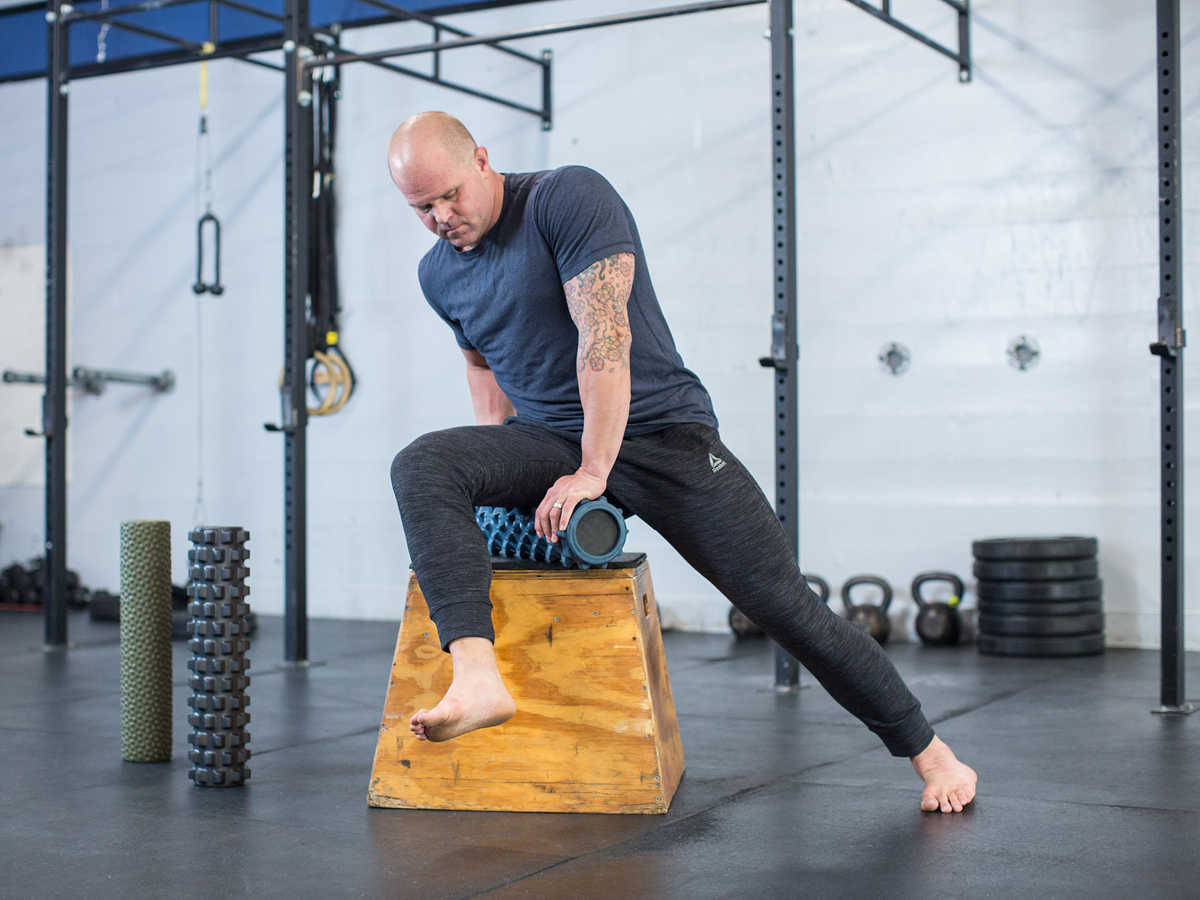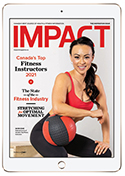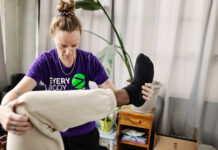“You need to stretch!”
You’ve heard it a million times before. The perplexing assertion that you’re not stretching enough and that it’s why you’re injured or sore, slow or clumsy. Think of your first coach admonishing you to stretch after practice or your gym teacher preaching about the importance of stretching. Oh, your back hurts? No problem! Just stretch your hamstrings and it will feel better. You can’t get into a good squat position because your quads are tight? Just stretch them out.
Conventional wisdom tells us that if we want to optimize athletic performance, improve flexibility, prevent muscle soreness and reduce potential for injury, we must stretch. For a long time, stretching has been a catch-all modality for dealing with soreness and pain, for range-of-motion restrictions and for joint troubles. Just keep stretching. But here’s the problem: stretching doesn’t work by itself. It doesn’t improve position, it doesn’t improve performance, it doesn’t make you faster, it doesn’t eliminate pain and it doesn’t prevent injury.
Let me clarify: When I say stretching I’m referring specifically to end-range static stretching or hanging out in an end-range static position with zero intention. I’m talking about purposeless stretching. Consider the classic hamstring stretch: You lie back, grab your ankle, pull your hamstring to end-range and then hang out while you dreamily watch the geese overhead flying south for winter. This type of stretching can theoretically lengthen your hamstring, but doesn’t tell you, or your coach, anything about your motor-control or ability to get into good positions. In other words, taking your hamstring to end-range and keeping it there is not going to help you run faster or change your capacity to deadlift more weight. Yet when most people have a tissue or joint restriction that prevents them from getting in to a good position, they think “Man, I suck! I need to stretch.”
An example, by way of analogy: if you pull on each end of a T-shirt, what happens after a minute or so? It becomes all stretched out, right? What do you think happens when you take your beautiful tissues to end-range and keep them there? They get all stretched out like your pitiful T-shirt. Imagine lengthening your hamstrings then sprinting down a field or attempting a max-effort deadlift without developing the strength or motor-control to handle that new position. You might as well get down on your knees and beg to be injured. Lengthening your muscles is not a bad thing if you have the motor-control to support that end-range position and you are expressing those end-range positions with load-bearing to full-range exercises. This is why we deadlift, squat and practice full-range functional movements in the gym.
The issue is not that static stretching lengthens the muscle. The issue is that it addresses (albeit poorly) only one aspect of your physiologic system – your muscle. It’s doesn’t address motor-control or the position of your joints or what’s going on at the joints.
If stretching is not the answer, what is? In short, we need to systematically deal with each of the problems that prevent us from getting into the ideal positions and keep us from moving. Addressing all the components that limit position and challenge movement efficiency will solve your specific problems and stimulate measurable improvement.
MAKING THE SWITCH FROM STRETCHING TO MOBILIZATION
I have deleted the words stretching and flexibility from my vocabulary and replaced them with movement and mobility – or mobilization.
I define mobilization as a movement-based, integrated, full-body approach that considers all elements that limit movement and performance. In short, mobilization is a tool to improve your capacity to move and perform efficiently.
The idea is to get you to stop thinking that stretching is important. Are you truly ready for this? Stretching is not important. Position and the application of position through movement is what matters most. If you can’t get into a good position because you’re limited, or you have a tissue restriction of some kind, stretching alone won’t give you the results you want. What will is a system that helps you figure out which of the variables are compromising your ability to move correctly and then engages effective modalities or techniques to resolve each of them.
TRY THESE AT HOME
Skin-Pinch Test
This test illuminates how your body compensates to adaptively short tissues. Stand up, hinge from your hips and grab a handful of skin around your hip flexors. Now stand up. What happens? You must overextend and keep your knees bent to lift your torso upright. This is exactly what happens when you sit for long periods of time. Your hip flexors start to reflect your working position, becoming adaptively short and stiff.
Belly-Whack Test
Just like it sounds, have someone randomly whack you along the belly. You should always have enough abdominal tone to take a whack to the belly. We do this at our gym and around the house. If you’ve got a spongy middle, you get caught right away.
Organizing the Scapula
A lot of coaches, athletes and physical therapists seem to think that an impingement of the shoulder automatically means a rotator cuff issue. Here’s what’s really happening: When your scapula is in a disorganized position, it turns your rotator cuff off. So, if someone tells you that your rotator cuff isn’t working correctly, you probably need to restore the scapula position so that your rotator turns back on.
- Lay on the floor and place a lacrosse ball between your shoulder blade and spine.
- On your back, bridge your butt up as high as possible, driving the ball deep into your soul and reach your arm overhead, parallel to the floor. Keep your elbows locked out.
- Push that arm as far as you can. Then bring it across your body and try to touch your opposite hip. The idea is to bring the shoulder over as far as possible so you can get maximum range in the tissues.
Read this story in the digital edition of IMPACT Magazine.
IMPACT Magazine’s 2021 Inspiration Issue
Read about our 2021 Canada’s Top Fitness Instructors – our top 30 from across Canada! Go beyond traditional thinking to optimize movement through stretching, find out about 7 DIY hacks to improve the air quality in your home, learn about taking care of your heart through proper nutrition, enjoy some of our best plant-based recipes yet, and work out with our Canada’s Top Fitness Trainers!


















